|
EQUINE CLICKER TRAINING..... using precision and positive reinforcement to teach horses and people |
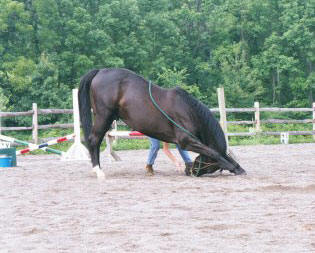
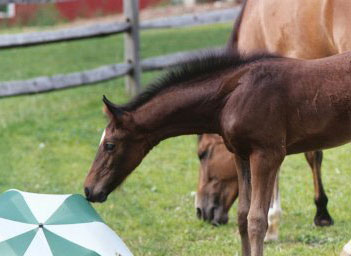
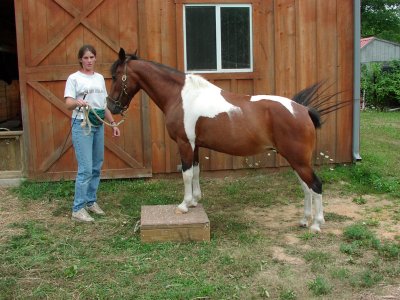
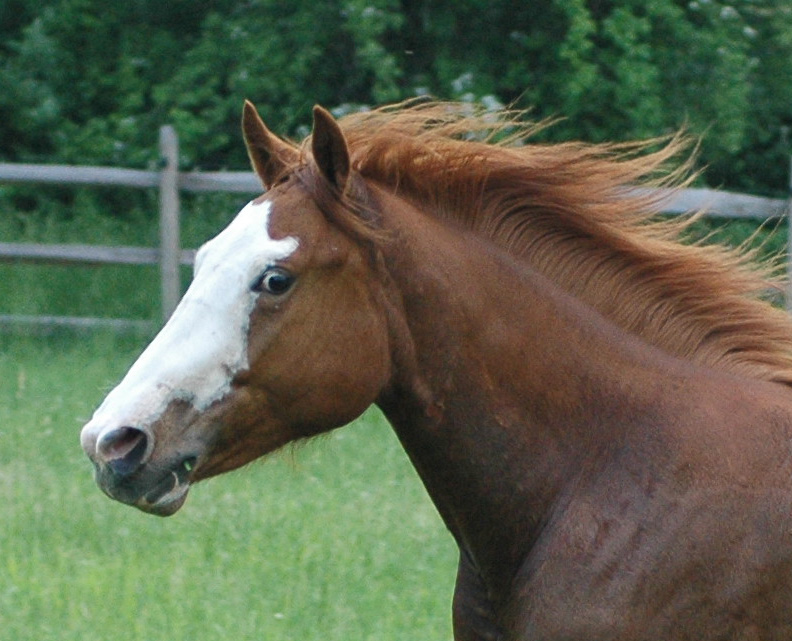
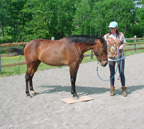
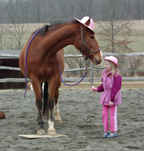
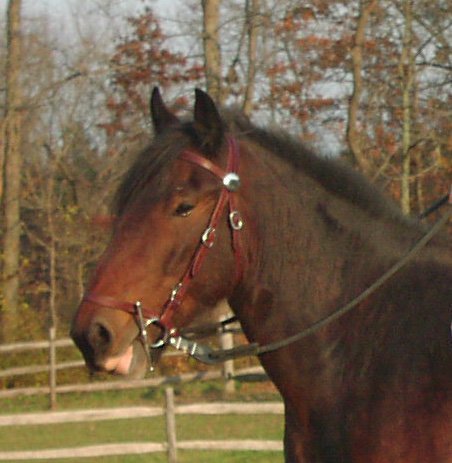
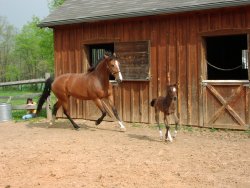 |
|
Winter Exercises
Here is a list of things to try with your horse. I have titled it “winter exercises” because if you are like me, your riding is limited by the weather in the winter months. To keep my horse’s life more interesting and to keep us both mentally stimulated, I often play in the aisle or stall and try to come up with an assortment of games to play. These exercises would also be great for a horse that was on stall rest or limited exercise or for a new horse or youngster who wasn’t ready for work in a big area.
There are lots of tricks that are easy to teach with the clicker and horses seem to enjoy. Please be warned that horses do love to offer their favorite tricks off cue, so think carefully about your horse’s personality and who handles him or her before you teach some of these. There are also a lot of ground work and exercises that you can do in a small space. You will be surprised at how much this improves your horse’s suppleness and responsiveness when you do get out.
I have sort of grouped them into general areas, but there is a lot of overlap.
Tricks
Smile Nod yes and no Stretch, park or stand square: or any kind of exercise where you teach your horse about foot placement Talk on command Yawn Count with a front foot (I wouldn’t teach this unless your horse understands stimulus control) Wave or salute with a front foot – this can lead to Spanish Walk Stand on a pedestal with 2 feet, 4 feet. You can combine the pedestal with the wave or turn on forehand for more fun. Kneel Bow (one knee bow or obeisance/circus bow where the horse just rocks back) – for detailed instructions for this, click on bow Fetch – most horses love this one, a variation on this is playing basketball (teach your horse to put a ball in a kid's basketball hoop) Take off the saddle pad where the horse reaches around and removes it. A good stretch and this is an old circus clown trick Cross the front legs (either as an X or interlocking) Close up – stand with all 4 legs close together Lie down on his sternum and also flat Sit up Draw a picture with markers or paints Pick up trash and put it in a bucket Stack cones Play musical instruments, toot bike horns etc… Pushing a ball Hide and seek with an object ( I sent my horse off down the aisle to find a cone)
Movement/yield to pressure exercises:
Turn on forehand Turn on haunches Give to the bit Teach your horse to back up off many cues (hand on chest, hand on nose, hand signal from out in front, hand signal from behind,using a tug on the tail (careful!)) Head lowering If you have a big enough aisle, you can do the beginnings of lateral work Come when called, does your horse know his name? Any kind of mat work Stand up and pose for the camera Ears forward Ground tying
Husbandry :Work on perfecting behaviors such as:
clipping (can you do it at liberty?) taking the bit (will the horse target it?) picking up feet (will the horse hold them up by himself?) stand for shots taking temperature accepting wormer haltering himself put a foot in a bucket as practice for soaking feeding time – is your horse polite? Do you have a routine for feeding grain?
Other
Teach your horse his colors or shapes See how many words your horse can have in his vocabulary – you can start these by teaching object discrimination
For more ideas, or directions to teach some of these, you will find Alexandra Kurland’s new Step-by-Step book to be helpful. It is available now (Jan 2004) from her web site.
While your horse is learning all these new things, take advantage any spare time to catch up on your reading. I found that in order to really succeed in clicker training, I had to learn not only the mechanics and timing, but also how to think in a totally new way, both with a new mindset and a new awareness of how to break things down.
Home | Articles | Clicker Basics | Community | FAQ | Getting Started | Horse Stories | Links | Photos | Resources
|
||||